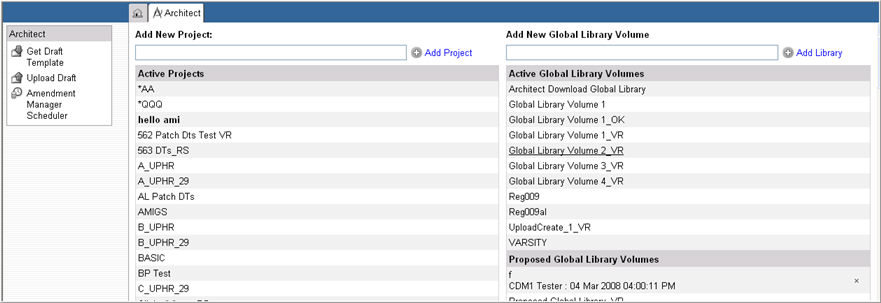
The Architect Module is the component of Medidata Rave that enables a study designer to develop electronic case report forms (eCRFs) for electronic data capture (EDC). Studies must be built and configured in the Architect module in order to be viewed in the EDC module.
Using a set of interactive screens, the study designer goes through the following steps in the Architect module to create the EDC module :
Create a Project
A Project serves as the container for the study. It holds all of the elements of the study including drafts, versions, and environments. Creating a project is simply creating a holder for these elements.
Create a Draft
A draft is the component of the study that enables a developer to create and edit the study folders, forms and fields, as well as its edit checks, matrices, dictionaries, deviations, and restrictions.
Publish the Draft into a Version
In order to see how the items created by the developer in the Architect module will be displayed to the users in the EDC module, the draft needs to be converted to a version. The first step in this conversion process is to publish the draft into a version.
Push the Version into a Study
After the draft has been published into a version, the next step is to push the version into a study. Once the version has been pushed into a study, the forms, fields, etc., can be viewed in the user-level format in EDC and users can begin entering data.
In order to access Architect functionality, the user must create a new project or open an existing project.
The Global Library Volume is similar to a CRF Draft in the Architect module. It provides a mechanism to store reusable elements - forms, folders, data dictionaries, unit dictionaries, matrices, edit checks, derivations, and custom functions - for study design.
Subject to permissions assigned to Security Groups or individual roles, Global Library will enable users to do the following:
Create, store, and copy elements to, from, and between Global Library repositories.
Propose a global library volume. A Copy Wizard will enable copying the elements and all their dependencies into a proposed global library volume thus allowing a user to suggest objects for inclusion in the global library. A global librarian can review proposed objects, and if appropriate, copy them into the desired global library volume.
Group elements into Global Library "Volumes". The volumes are created and maintained in Architect similar to Architect projects.
Define allowable copy sources for copy operations. These can be draft or published versions of other projects or Global Library volumes.
Also called "Offline Global Library", users can download or upload CRF drafts to and from Microsoft Excel workbooks for viewing and editing.
In order to access Global Library, the user must create a new Global Library or open an existing one.
Select and click the Architect link from the list of installed modules on the Home Page.

Upon selecting the Architect module, subject to permissions assigned in the Configuration module for Architect Projects and Global Libraries, the Architect main page will open, displaying a list of Active Projects, Inactive Projects (projects no longer used), Active Global Library Volumes, proposed Global Library Volumes, and Inactive Global Library Volumes.

Copyright © 2014 Medidata Solutions, Inc. All rights reserved.